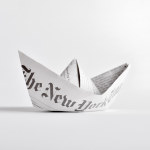Show, don’t tell, in the first paragraph

|
|
|

|
Why should you write feature article leads? The New York Times runs 33% feature leads Lead by example: The New York Times grabs reader attention with such feature leads as description, juicy details and examples. And, unlike you, it’s a news organization. |
|
|
|

|
Anecdotes make good feature leads To draw readers in, tell them a story Tell a tale: When writing features stories rather than breaking news, set the tone with anecdotal leads. |
|
|
|

|
How to write a good feature lead with statistics Prove it with a data point It adds up: Don’t do a data dump. But startling statistics can draw readers in. |
|
|
|

|
Avoid abstraction in feature ledes Concrete leads are the price of entry for feature articles Show, don’t tell: When writing feature story leads, choose concrete details, not abstract ideas. You might try painting a picture or telling a story. But whatever you do, turn ideas into things. |
|
|
|
 |
Avoid announcements in press release leads Don’t announce that you’re announcing For crying out loud: Surely there’s a better way to start your story than XYZ Company today announces that … |
|
|
|

|
What writers and others say “A lead should lead — into the point of the story. If the CEO’s point isn’t the weather, why do we so often start his messages with the changing of seasons?” — Ann Wylie, writing coach, Wylie Communications |
|
|
|

|
What writers and others say A lead “should shine like a flashlight down through the piece.” — John McPhee, pioneer of creative nonfiction |
Get more tips on feature leads on Rev Up Readership.